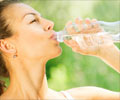Water birth or underwater birthing is a popular alternative way of birthing.

In the light of more women now choosing alternative ways of birthing rather than going to hospitals, water birthing definitely rates as one of the top choices. That is why perhaps most hospitals in the U.K. cite water birth as an option for healthy women with uncomplicated pregnancies! Though statistics show that other hospitals too across the world now offer this birthing technique, water birthing largely remains a midwives forte.
The Process
In a water birth, a baby is born in a tub of warm water. The temperature of water is maintained between 34 –37 degree Celsius or one that suits the mother-to-be. The depth of water should be such that when the mother kneels and rests on her heels, the water covers her belly completely and its surface rests just under her breasts.
Many expectant mothers, sitting in the tub perceive a sense of pain relief during labor. Understandably, many prefer to have the entire process of delivery under water while others choose to come out of it after the first stage of labor.
Studies indicate that such an immersion in water, especially during the first stage, does actually decrease maternal pain considerably; it also reduces the use of epidural and spinal analgesics. Also, findings show that there are no adverse effects whatsoever on the duration of labor or on the well being of the child at this stage.
Advertisement
Bone of Contention
Advertisement
Arguments For:
• Being in water is a soothing experience in itself and the mother is soon lulled into a relaxed state. With alleviation of stress, endorphins or pain inhibitors are released in her body. So, the mother experiences lesser pain as she goes into labor. Furthermore, with the muscles now relaxed, tissues around the vagina become more elastic allowing for easier birthing. Perineal (tissues close to the vagina) tearing is less, thus reducing the chances for episiotomy (a surgical procedure that widens the birth canal to facilitate birth) again- lesser agony for the mother!
• Additionally, as the buoyancy of water reduces her weight, she can comfortably position and shift her body more easily under water than on a conventional bed.
• On the other hand the baby, who for nine months floats in the amniotic fluid in the mothers’ womb, will find an under water birth a gentler transition into the ‘new world’. This translates as lesser stress for the neonate.
• Many experts opine that fetal complications are reduced when the stress of labor and delivery is lessened.
Arguments: Against
• An improperly handled under water delivery could cause the infant to drown; hence the procedure is labeled ‘a near drowning experience.’ In fact, under water births in Sweden stopped after a newborn so delivered died due to asphyxiation.
• A neonate instinctively starts to breathe on its own when it comes into contact with air and the umbilical cord is cut. Until such time, it continues to receive oxygen through the cord. However, studies have shown that babies who do not get sufficient oxygen at birth tend to gasp for air. Under such circumstances, an under water delivery poses great risks for the new- born. The infant may swallow some water, which could enter the lungs. Water aspiration may, in turn, cause serious respiratory infections such as pulmonary edema, that can be life threatening.
• Other serious conditions that may develop in a neonate born under water are pneumonia, water borne infections, hypoxia (shortage of oxygen) and hyponatremia (lowering of sodium in the blood).
• There is greater risk of the umbilical cord snapping in under water deliveries, possibly due to more movements involved in bringing up the newborn to the surface.
• For the mother, the soothing effect of warm water that relaxes her muscles during delivery may very well turn out to be a disadvantage soon afterwards. If the muscles continue to be relaxed even after the placenta is delivered, then it can interfere with the process of blood clotting. It is vital to the mother that blood clots soon after delivery, otherwise a severe hemorrhage can cost her life.
• In a water birth, the extent of blood loss in the mother cannot be ascertained because blood gets diluted; this can balloon into a serious problem.
• Another theory holds that delivering the placenta under water can cause water embolism.
To Be or Not To Be
Are water births safe? This is the first question that pops into the mind. Because all said and done, during a delivery, the safety of the mother and child are of paramount importance. And to a mother nothing but nothing is more precious than her baby’s life.
However, the answer to the question remains elusive. The fact of the matter is, currently very few trials and studies have been conducted on water births to swing the verdict either way. What we need is substantial evidence-collected and interpreted in a systematic manner- until then the debate is bound to continue.
Yet, in the best interests of mother and child, if the mother-to-be does opt for a water birth, she must be fully informed about the benefits and hazards of such a procedure. The final decision is hers -after all, she is playing the role of the Creator!
Source-Medindia









